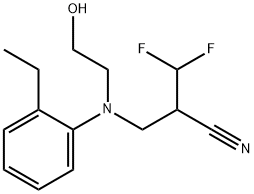Acetylcholine chloride , 99% , 60-31-1
Synonym(s):
Acetylcholine chloride;ACh
CAS NO.:60-31-1
Empirical Formula: C7H16ClNO2
Molecular Weight: 181.66
MDL number: MFCD00011698
EINECS: 200-468-8
| Pack Size | Price | Stock | Quantity |
| 5G | RMB60.80 | In Stock |
|
| 25G | RMB239.20 | In Stock |
|
| 100G | RMB799.20 | In Stock |
|
| others | Enquire |
PRODUCT Properties
| Melting point: | 146-150 °C (lit.) |
| Density | 1.1235 (rough estimate) |
| refractive index | 1.5560 (estimate) |
| storage temp. | room temp |
| solubility | H2O: 0.1 g/mL, clear, colorless |
| form | Crystalline Powder |
| color | White |
| biological source | synthetic |
| Water Solubility | Soluble IN COLD WATER |
| Sensitive | Hygroscopic |
| Merck | 14,87 |
| BRN | 3571875 |
| Stability: | Stable. Substances to be avoided include strong oxidizing agents. Protect from moisture - very hygroscopic. |
| LogP | -3.904 (est) |
| CAS DataBase Reference | 60-31-1(CAS DataBase Reference) |
| EPA Substance Registry System | Ethanaminium, 2-(acetyloxy)-N,N,N-trimethyl-, chloride (60-31-1) |
Description and Uses
Acetylcholine is a neurotransmitter that binds to nicotinic and muscarinic acetylcholine receptors (AChRs) in the central and peripheral nervous systems. It mediates motor function at the neuromuscular junction but also has functions in the parasympathetic and sympathetic nervous systems. It is involved in learning and memory through actions at nicotinic AChRs in the CNS. The actions of acetylcholine are terminated primarily via the action of acetylcholinesterase, which breaks it down into acetate and choline. Acetylcholine (chloride) mimics the effects of acetylcholine and has been used to determine the function of acetylcholine in various biological processes. Acetylcholine (chloride) inhibits peptide aggregation of p53 mutants in vitro at micromolar concentrations. It increases alveolar fluid clearance in a dose-dependent manner and enhances Na+/K+-ATPase activity, effects which are blocked by atropine , in a mouse model of pulmonary edema.
Acetylcholine Chloride is a cholinergic, antiarrhythmic, miotic, vasodilator (peripheral).
Safety
| Symbol(GHS) |  GHS07 |
| Signal word | Warning |
| Hazard statements | H315-H319-H303-H335 |
| Precautionary statements | P264-P280-P302+P352+P332+P313+P362+P364-P305+P351+P338+P337+P313-P261-P280a-P304+P340-P305+P351+P338-P405-P501a |
| Hazard Codes | Xi |
| Risk Statements | 36/37/38 |
| Safety Statements | 26-37/39-36 |
| WGK Germany | 2 |
| RTECS | FZ9800000 |
| F | 3-8-10-21 |
| TSCA | Yes |
| HazardClass | IRRITANT |
| HS Code | 29379000 |
| Toxicity | LD50 in mice, rats (mg/kg): 20, 22 i.v., 170, 250 s.c., 3000, 2500 i.p. (Molitor) |


